|
|
 |

I try to stay away from making grand pronouncements, but occasionally the facts are such that nothing less will do: Of all the world’s major wine regions, none can boast a stretch of success remotely rivaling that of Italy’s Piedmont region during the past 15 years. This has been a strikingly successful period for all of Piedmont’s wines, but for those made from the regal but famously difficult Nebbiolo grape, the run of great vintages is downright astonishing. Indeed, the winning streak for the most important renditions of Nebbiolo--Barbaresco and Barolo--is so unprecedented historically that it is, well…a little scary.
The scary aspect is that the principal factor behind Piedmont’s remarkable run seems to be climate change. Harvests are now starting up to a month before they typically began as recently as the 1970s and ‘80s. This can be explained in part by the spread of crop thinning or “green harvesting,” which reduces yields and eases the vine’s task of ripening its fruit. However, those who wish to attribute the entirety of the phenomenon to lowered yields have a weak case because they cannot account for other recent changes. For example, very hot growing seasons (such as 2003, 2007 and 2009) are now becoming common whereas they were formerly almost unknown. Additionally, heat is not the only important and 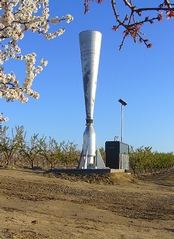 recurrent change in Piedmont’s climate: Hail has suddenly become a serious problem whereas it was formerly very rare, and one now sees hail cannon deployed in the area in hopes of dealing with it. recurrent change in Piedmont’s climate: Hail has suddenly become a serious problem whereas it was formerly very rare, and one now sees hail cannon deployed in the area in hopes of dealing with it.
In case you weren’t subjected to multiple courses in statistics (as I was), we should note that one cannot safely extrapolate a long-term trend from a relatively short-term succession of events. It is possible that the past 15 years were just a climatic anomaly that will appear as a bump on a relatively straight line when viewed in broad retrospect. But that seems very unlikely to me, and in several dozen interviews conducted in Piedmont during 2010, 2011 and 2012, I found almost nobody who didn’t believe that something deeper and more lasting was underway.
Of course, one reason why Piedmontese vintners might be willing to say that their climate has changed “for good” is found in the ambiguous 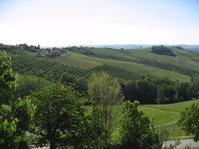 meaning of that term: Where Nebbiolo is concerned, the climate may have changed “for good” but it has definitely changed “for the better.” Over the past century, excellent vintages for Nebbiolo in the Barolo and Barbaresco districts came once or twice a decade. Since 1996, excellent vintages have been enjoyed every single year--with the sole exception of 2002. meaning of that term: Where Nebbiolo is concerned, the climate may have changed “for good” but it has definitely changed “for the better.” Over the past century, excellent vintages for Nebbiolo in the Barolo and Barbaresco districts came once or twice a decade. Since 1996, excellent vintages have been enjoyed every single year--with the sole exception of 2002.
Naturally, some of these growing seasons were even stronger than others, and it is possible to start looking down one’s nose at vintages that are “merely” excellent because others surround them that are indisputably great. So, for instance, the vintages on which I’ll be reporting predominantly this month and next--2009 for Barbaresco and 2008 for Barolo--are not quite as uniformly strong as the very best vintages during the recent run.
To be clear, the very best vintages are 1996, 1999, 2001, 2004 and 2006, but it would be almost perverse to say anything bad about 2008 and 2009--just as it would be stupid to tear up a big paycheck because you’ve recently been spoiled by receiving even bigger ones. 2008 and 2009 would have been regarded as windfalls by vintners in Piedmont during the 1970s, and both vintages produced hundreds of fabulous wines. And with global market conditions still being very tough, savvy consumers will be able to feast on some marvelous values if they buy with care.
This conclusion was driven home quite forcefully earlier this summer during intensive blind tastings of more than 300 new releases in Alba  under the name, “Nebbiolo Prima.” These tastings are conducted over five days for about 45 writers from around the world in an ultra-professional manner. Three identical white rooms provide the setting, and all of the wines are presented by top Italian sommeliers, with roughly 65 wines poured each morning. I suspect that this isn’t everyone’s idea of a good time, but I regard this event as the finest of its kind in the world. under the name, “Nebbiolo Prima.” These tastings are conducted over five days for about 45 writers from around the world in an ultra-professional manner. Three identical white rooms provide the setting, and all of the wines are presented by top Italian sommeliers, with roughly 65 wines poured each morning. I suspect that this isn’t everyone’s idea of a good time, but I regard this event as the finest of its kind in the world.
This month’s column includes reviews of all of the top wines that I tasted from Roero and Barbaresco, including DOCG wines from the 2009 vintage and Riserva bottlings from 2008 in Roero and 2007 in Barbaresco. Next month, I’ll be back with reviews of 2008 DOCG Barolos and 2006 Barolo Riservas.
To provide a bit of background on the process behind the reviews that follow, I tasted all of the wines below, blind, in four carefully conducted peer-group tastings. Every recommended wine was tasted at least twice,  with a second evaluation performed before the identity of the wine was known to me (to assure the accuracy of my score, since order of presentation or knowledge of the producer can have distorting effects). Notes on the top wines are broken down below into four categories, and are set forth within those categories in order of excellence, with the highest-scoring wines topping the list. with a second evaluation performed before the identity of the wine was known to me (to assure the accuracy of my score, since order of presentation or knowledge of the producer can have distorting effects). Notes on the top wines are broken down below into four categories, and are set forth within those categories in order of excellence, with the highest-scoring wines topping the list.
In this year’s reviews, I’ve tried to render the producers’ names with the family name second in order, as is the custom in English speaking countries (but not always in Piedmont). Additionally, I’ve tried to offer rough indications of retail prices, but please note the caveat that these are rough, and you’re likely to see many of the wines priced significantly lower or higher in any particular market. In a few instances my search for pricing guidelines came up empty, so of course it was better to list nothing than to merely guess.
Two last words before we get to reviews: Red winemaking seems to be improving significantly in the small appellation of Roero these days, and though the area is better known for white wines made from Arneis than for Nebbiolo-based reds, these have really become wines to take seriously. Second, Riserva wines are out of fashion in Piedmont and are only made in small quantities by a few producers, but the best 2007 Riservas from Barbaresco and 2006s from Barolo (reviewed next month) are absolutely terrific and are well worth a search--even an international search.
ROERO DOCG 2009
Cascina Ca’ Rossa, Roero “Audinaggio” 2009, $24: This is a lovely wine marked by exceptionally interesting aromas including a striking lavender note. The fruit shows lots of ripeness and generosity, and though the wine isn’t especially big, it is nevertheless very expressive, with fine complexity and wonderful proportionality. 92
Malaballa di Canale, Roero 2009, $22: Interesting anise/licorice notes get this off to a great start, and very ample fruit suggests that some serious yield reduction in the vineyard is behind this impressive wine. Deeply flavored and rounded in texture, it nevertheless shows lots of acidity and tannin. 91
Malvirà, Roero 2009, $24: Strikingly sweet on the palate, this wine is a bit of a stylistic outlier, but the sweetness is very appealing and never shows an artificial, confected aspect. The aromas are very open and expressive, and the finish is long and delicious thanks to the core of sweetness that buffers the acidity and tannin. 91
ROERO RISERVA DOCG 2008
Monchiero Carbone Roero Riserva “Printi” 2008, $28: This remarkable wine is very dark in color and shows striking concentration of pigments. Spicy and floral, with a subtle menthol note, this actually looks and smells more like a Barolo from a top cru than a wine from Roero, and it musters the weight and depth of flavor to back up that impression. There’s a notable dose of new wood present, yet the plush fruit is more than equal to the challenge of counterbalancing the oak. 93
Malaballa di Canale, Roero Riserva “Castelletto,” 2008: A highly complex and expressive wine, this shows pleasantly stewed fruit notes and soft, tender mouthfeel. There’s excellent depth to the flavors and a savory backnote of carpaccio, as well as finishing notes of saline minerals. 92
Cascina Ca’ Rossa, Roero Riserva “Mompissano” 2008, $30: Serious and packed with power from stem to stern, this shows dark fruit tones and very fine concentration and depth of flavor and feel. Plush and muscular, with nice spice and mineral notes in the finish. 92
Michele Taliano, Roero Riserva “Ròche dra Bòssora” 2008, $30: This shows very complex aromas that actually merit the overused term “bouquet.” Subtle floral, fruity and savory aromatic notes lead to open, sweet fruit flavors recalling both red and black cherries. The tannins are very fine in grain, and the overall impression is one of outstanding complexity and class. 92
Malvirà, Roero Riserva “Trintà” 2008, $30: This gets off to a dramatic start with a big blast of spicy new wood on the nose. Oak shows on the palate too, but waves of expressive, energetic red fruit recalling cherries and strawberries hold center stage. 91
Cascina Chicco, Roero Riserva “Valmagiore” 2008: Soft and inviting, this is a gorgeously feminine wine with relatively low acidity and ripe, tender tannins. Leafy scents and a meaty, savory note recalling carpaccio lend special interest to this ample, impressively integrated wine. 91
BARBARESCO DOCG 2009:
Montaribaldi, Barbaresco “Sorì Montaribaldi” 2009, $40: This 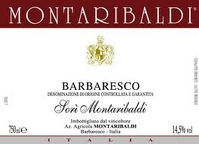 producer has a relatively low profile in the USA but has performed superbly for at least three consecutive vintages. This bottling shows impressively dark color and substantial weight on the palate, with a very engaging texture that is rich but also defined. The ripe, plush fruit, fresh acidity, and grippy tannins are perfectly proportioned, and the finish shows a deliciously savory character that persists thanks to very subtle oak. 95 producer has a relatively low profile in the USA but has performed superbly for at least three consecutive vintages. This bottling shows impressively dark color and substantial weight on the palate, with a very engaging texture that is rich but also defined. The ripe, plush fruit, fresh acidity, and grippy tannins are perfectly proportioned, and the finish shows a deliciously savory character that persists thanks to very subtle oak. 95
Giacosa Fratelli, Barbaresco “Basarin Vigna Gianmatè” 2009, $55: Very dark color and a sexy, smoky bouquet announce the seriousness of this wine before it ever even hits one’s tongue, and once it hits, there’s no doubting its excellence. Rich and rippling with power but also very complex and stylish, this is extremely impressive. 95
Giuseppe Nada, Barbaresco “Casot” 2009, $40: This standout from the commune of Treiso is boldly oaked, but the wood is backed up by terrific fruit recalling dark cherries and a host of accents including Asian spices and church incense. There’s an alluring sweetness that rides through the considerable acidity and tannin that keep this ripe wine in form, and which will enable it to develop even more complexity in coming years. 94
Paitin, Barbaresco “Serra” 2009, $35: This wine was initially a bit reticent in terms of aroma, but swirling over time brought out lots of lovely floral and spice nuances that offer appealing accents to the dark, dense, ripe and flavorful fruit. Packed with stuffing and succulence, this is clearly an offspring of the warm 2009 growing season and a testament to how good Nebbiolo-based wines can be in this vintage. 93
Antica Casa Vinicola Scarpa, Barbaresco “Tettineive” 2009: Marvelous scents of wildflowers and autumn leaves work exceptionally well with the dark-toned fruit in this wine, which is concentrated and deeply satisfying but still true to the feminine profile of Barbaresco. 93
Fontanabianca, Barbaresco “Bordini” 2009, $49: If a wine can be “sexy,” this is a very good candidate for the term. Soft, sweet, rounded and alluring, it displays lovely aromas of lavender and sweet spices, followed by tender, succulent fruit that easily counterbalanced its structural components of acidity and tannin. 93
Cascina Morassino, Barbaresco “Ovello” 2009, $45: This generous wine is stuffed with deep flavors recalling both red and black fruits backed with a serious but balanced dose of spicy oak. Meaty, savory notes augment the fruit beautifully and lend a sense of completeness to the wine, a sense that is enhanced by its exceptional symmetry and balance. Still quite firm but hardly closed, this could be enjoyed in the near term but would best be cellared for three or four years. 93
La Spinona Az. Agr. Di Berutti Pietro, Barbaresco “Bricco Faset” 2009, $40: This is a dark, intensely flavorful wine that doesn’t achieve its impressive flavor impact at the cost of seeming over-ripe or over-oaked. Complete and coherent, it is firmly structured but nevertheless openly and persistently flavorful thanks to the lovely impression of sweetness lent by the ripe fruit. 93
Marchesi di Barolo, Barbaresco “Serragrilli” 2009, $65: A very 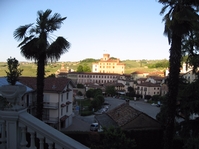 showy wine that somehow manages to seem more natural than contrived, this displays lots of sweet oak on the nose, but there’s also enough sweet fruit to maintain a perfectly balanced profile on the palate and through the finish. Already delicious, this will nevertheless reward at least another five years of cellaring. 93 showy wine that somehow manages to seem more natural than contrived, this displays lots of sweet oak on the nose, but there’s also enough sweet fruit to maintain a perfectly balanced profile on the palate and through the finish. Already delicious, this will nevertheless reward at least another five years of cellaring. 93
Pier, Barbaresco “Rio Sordo” 2009, $40: A beautiful, thoroughly engaging wine, this is sweet, savory and spicy, with wonderfully ripe fruit that is defined and structured but still succulent. Fleshy and flavorful, this is absolutely delicious. 93
Orlando Abrigo, Barbaresco “Rocche Meruzzano” 2009, $49: The main reason to taste blind whenever possible is to avoid the auto-suggestion phenomenon under which famous wines seem better than they are and obscure ones fail to get the full credit that they deserve. This is a little-known producer in global terms, but the wines are stunningly good and consistently so, ranking very highly in my blind tastings for three years running. This is strikingly dark and dense, with notable wood on top, but terrific dark-toned fruit beneath that oak. Lightly spicy, it provides very deep, sweet flavors and will develop positively for another decade. 93
Montaribaldi, Barbaresco “Palazzina” 2009, $29: In my opinion Montaribaldi’s “Sorì Montaribaldi” bottling ran second to the Palazzina in both 2007 and 2008, though in 2009 I found the “Sorì Montaribaldi” marginally more impressive. Still, this is a comparison that I’d love to re-run many times in the future, as both are terrific, with this showing very dark color and equally impressive depth of flavor. It wasn’t as complex aromatically as the “Sorì Montaribaldi,” but it will almost certainly rise from excellent to outstanding with additional time in bottle. 92
Bonifacio, Barbaresco 2009: This is an excellent wine that may develop into a fabulous one. It shows impressively dark color, expressive aromas, deep dark cherry flavors, a rounded texture, and a softly sweet finish. It isn’t yet terribly complex, but bottle age will almost certainly change that, and the wine’s wonderful purity and balance should keep it in great shape as secondary notes develop over time. 92
Angelo Negro e Figli, Barbaresco “Cascinotta” 2009: Sweet, flowery aromatics lead to lovely flavors that are rather unusual, showing ripe raspberry and wild strawberry flavors more than the standard issue cherry notes. Feminine but focused and serious, this is very stylish and indisputably delicious. 92
Cascina Saria, Barbaresco “Colle del Gelso” 2009: Dark color and deeply concentrated pigmentation show what’s in store here, and though the wine was rather closed and restrained aromatically when I tasted it in May in Alba, it showed lots of inner strength and admirable purity, with subtle oak and strong fruit. 92
Pietro Rinaldi, Barbaresco “San Cristoforo” 2009, $60: This was the darkest of a flight of notably dark wines, and it followed through with deep, intense flavors that were very engaging and impressive. It will need time to unwind more aromatic complexity, but there’s no doubt it will do so. 92
Cascina Morassino, Barbaresco “Morassino” 2009, $40: Ripe, full and generous, this wine is off to a terrific start on what may prove to be a long life. Plush but not chunky or obvious, it shows fruity aromas and ripe flavors, with subtle mineral backnotes and restrained oak. Despite its soft, rounded character, there’s plenty of acidity and tannin to structure the ripe fruit. 92
La Ca’ Nova, Barbaresco “Montestefano” 2009, $45: This features a pretty, pure nose with expressive floral topnotes and a fresh, feminine profile. It is a little lighter in weight than many of the 2009 Barbareschi, but there’s no lack of expressiveness to the ripe fruit notes of red cherry and red raspberry, and indeed the wine is actually more distinctive and impressive for packing so much flavor into a relatively modest package. 92
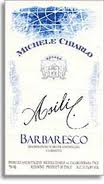 Michele Chiarlo, Barbaresco “Asili” 2009, $50: This utterly charming wine shows lovely aromas that are freshly floral, purely natural, and only faintly adorned by spicy oak. The flavors are tender and sweet, with invitingly soft texture that persists through a long finish thanks to wonderfully fine-grained tannins. 92 Michele Chiarlo, Barbaresco “Asili” 2009, $50: This utterly charming wine shows lovely aromas that are freshly floral, purely natural, and only faintly adorned by spicy oak. The flavors are tender and sweet, with invitingly soft texture that persists through a long finish thanks to wonderfully fine-grained tannins. 92
Ca’ del Baio, Barbaresco “Asili” 2009, $40: A deeply delicious wine, with excellent concentration and persistent, penetrating flavors, but also fine definition and appealing savory accents. 92
Albino Rocca, Barbaresco “Ronchi,” 2009, $50: This driving, intense wine shows abundant power and purpose, with excellent depth of fruit and a very persistent finish. These are descriptors that don’t usually coincide with others like “fresh” and “pure,” but those also appear in my notes from the blind tasting, which is especially impressive. 92
Luisin, Barbaresco “Sorì Paolin” 2009, $45: An impressive wine showing dark color, ripe Bing cherry fruit, and flavors that are deep and authoritative. There’s lots of oak showing on both the nose and the palate, but there’s more than enough fruit to keep this in near-optimal balance. 92
Ceretto, Barbaresco “Bricco Asili Bernardot” 2009, $75: This is a fleshy, muscular wine that displays wonderful texture, with rich fruit that is framed by very classy oak and lots of fresh acidity and fine-grained tannin. It wasn’t as flashy and overt as most of the wines listed above it here, but I don’t doubt that it will surpass many of them over the longer term. 92
Giacosa Fratelli, Barbaresco “Basarin” 2009, $50: Dark in color and also dark in fruit tone, with flavors recalling black cherries and plum sauce, this is surprisingly open and juicy in flavor. An excellent example of the modern style of Barbaresco. 91
Paitin, Barbaresco “Sorì Paitin” 2009, $45: Ripe and even a bit stewed in flavor profile, this wine shows itself as a product of a very warm year, yet the ripeness is very endearing thanks to the spicy aromas and flavors and the saline mineral notes that accent its aromas and flavors. 91
Armando Piazzo, Barbaresco 2009, $35: This feminine wine is a little light in color and weight and might not initially seem as impressive as some others, but it packs a lot of punch on a light frame. Fresh aromas show floral and spice notes, followed by engaging flavors of dried red cherries that remain sweet through the finish, which is structured by lots of ripe, fine-grained tannin. 91
Poderi Colla, Barbaresco “Roncaglie” 2009, $50: This exceptionally consistent wine is lovely in 2009, showing soft, sweet flavors and lovely floral aromas. The fruit is pure in profile and soft in texture, but there’s enough acidity and tannin to enable this to develop additional aromatic and flavor nuances over the course of another 5-7 years. 91
Moccagatta, Barbaresco “Basarin” 2009, $51: This wine needs a little more time to achieve optimal integration, but the component parts are very impressive. There’s lots of smoky, spicy wood on the nose, with plenty of sweet, savory fruit underneath. 91
BARBARESCO RISERVA DOCG 2007
Orlando Abrigo, Barbaresco Riserva “Vigna Rongalio Meruzzano” 2007: If I were really greedy, I wouldn’t write about this wine at all, but in fact I’m only moderately greedy and willing to take the chance that it will be sold out before I can buy it myself. Made from manifestly marvelous material, this was the most deeply flavored, sweetest and most succulent wine that I tasted during the first two days of Nebbiolo Prima in 2012, with dark cherry flavors that seemed impossibly deep and persistent without seeming over-ripe or over-extracted. Barely showing any development in color, this has years of additional development ahead of it. A fleshpot with focus, this is jaw-droppingly impressive. 96
Cascina Bruciata, Barbaresco Riserva “Rio Sordo” 2007, $55: 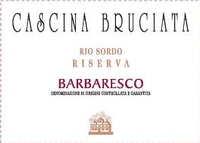 Wonderfully complex in aroma and flavor and even in texture, this is a terrific wine that is already near the top of its game. Sweet spices and floral, leafy aromas get it off to a great start, and soft, fleshy flavors deliver the goods on the palate as well, with sneaky tannins offering definition and focus without any astringency. Very skillfully crafted from outstanding fruit. 95 Wonderfully complex in aroma and flavor and even in texture, this is a terrific wine that is already near the top of its game. Sweet spices and floral, leafy aromas get it off to a great start, and soft, fleshy flavors deliver the goods on the palate as well, with sneaky tannins offering definition and focus without any astringency. Very skillfully crafted from outstanding fruit. 95
Paitin, Barbaresco Riserva “Sorì Paitin – Vecchie Vigne” 2007, $60: Notably but pleasantly earthy, this is complex and even a little exotic, with layers of sweet fruit accented by notes of wild mushrooms, underbrush and tobacco leaves. 94
Roberto Sarotto, Barbaresco Riserva “Gaia Principe” 2007: Terrifically dark color makes this a standout, and good looks are just the beginning of the fun, as this follows through with deeply satisfying fruit loaded with glycerin and ripe tannin. Very, very sexy stuff. 93
Massimo Rivetti, Barbaresco Riserva “Serraboella” 2007: Rather traditional in style but indisputably charming, this shows more subtlety and grace than most of the 2007 Riservas, but it is still a child of the vintage with layers of soft, sweet fruit. 93
Produttori del Barbaresco, Barbaresco Riserva “Pora” 2007, $49: I tasted all of the 2007 Riserva bottlings from this renowned cooperative this year, and though all of them are excellent in this vintage, the Pora was the only one shown blind during Nebbiolo Prima. It is sweet and sappy and very soft in texture, with the fruit having long since soaked up any overt influence from wood. There are lots of little nuances of aroma and flavor, but the ensemble already seems remarkably integrated and harmonious. 93
* * *
Questions or comments? Write to me at michael@franzwine.com
|
 |
|